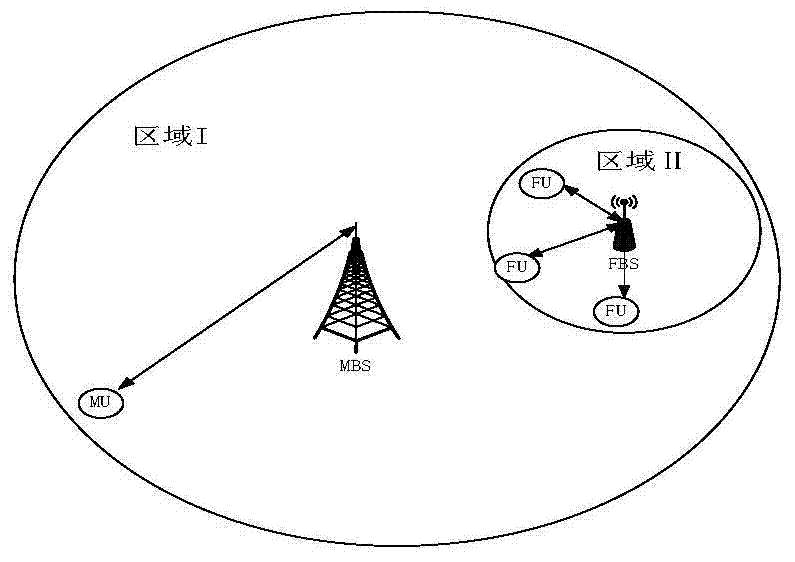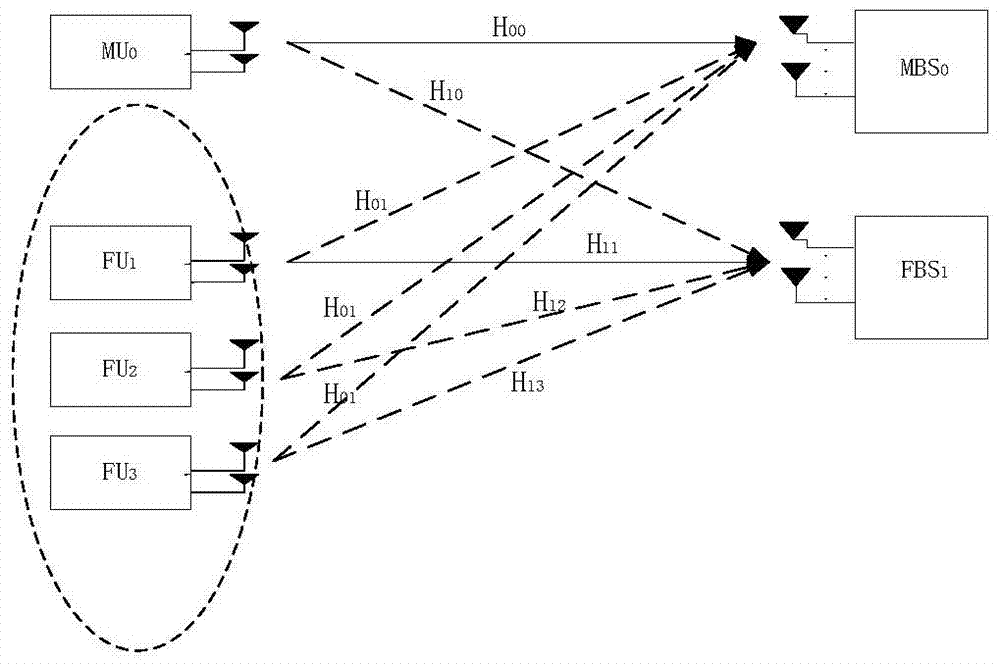A Cognitive Interference Management Strategy in Two-layer Heterogeneous Network System
A heterogeneous network and interference management technology, applied in network planning, electrical components, wireless communication, etc., can solve problems such as reducing the bit error rate of femtocell users, accelerating the convergence of interference alignment algorithms, and the distribution of sub-user interference in cells.
- Summary
- Abstract
- Description
- Claims
- Application Information
AI Technical Summary
Problems solved by technology
Method used
Image
Examples
Embodiment Construction
[0028] Below in conjunction with accompanying drawing and embodiment the present invention will be further described
[0029] An embodiment of a cognitive two-layer heterogeneous network cell area-based interference management strategy (see attached figure 1 shown), in the cognitive two-layer heterogeneous network structure, there is one macrocell user (MU) and three femtocell users (FU). The number of antennas at the sending end of FU and MU can be any number, and N is taken here t =N f =2, it is assumed that the receivers of both MU and FU can obtain perfect channel information, regardless of the interference from MU to FU. Specific steps are as follows:
[0030] First, the sending end of each user sends a femtocell base station (FBS 1 ), macro cell base station (MBS 0 ) to send an uplink signal, the base station feeds back channel information, and the sending end of each user obtains the channel status;
[0031] According to background sharing, the sending ends of FU an...
PUM
 Login to View More
Login to View More Abstract
Description
Claims
Application Information
 Login to View More
Login to View More - R&D
- Intellectual Property
- Life Sciences
- Materials
- Tech Scout
- Unparalleled Data Quality
- Higher Quality Content
- 60% Fewer Hallucinations
Browse by: Latest US Patents, China's latest patents, Technical Efficacy Thesaurus, Application Domain, Technology Topic, Popular Technical Reports.
© 2025 PatSnap. All rights reserved.Legal|Privacy policy|Modern Slavery Act Transparency Statement|Sitemap|About US| Contact US: help@patsnap.com



